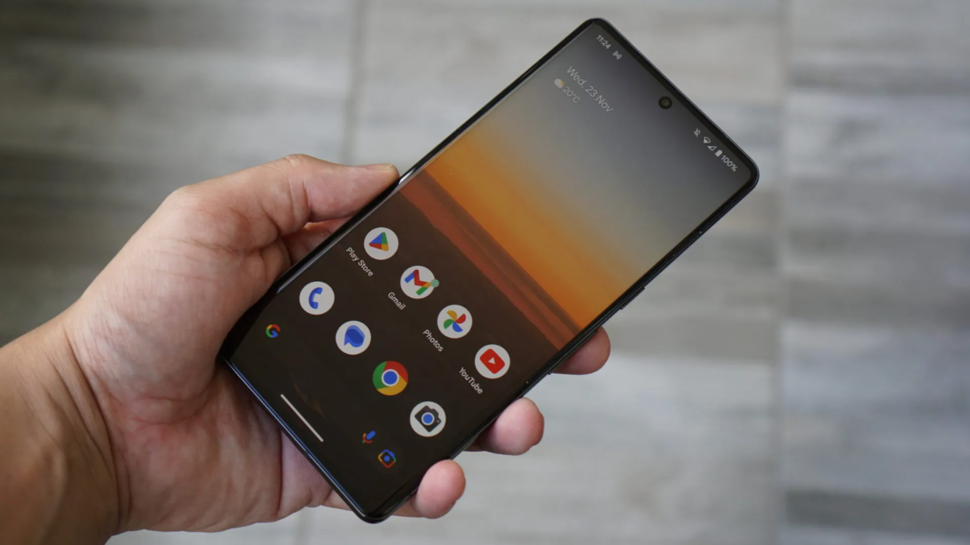Apple’s iOS 17 is almost here, and it’s a lot more fully featured than Android 14. A casual glance at Apple’s iOS 17 press release compared with Google’s non-existent equivalent belies that, as did the spate of articles that questioned where Google’s Android 14 was at the big Google I/O event.
It’s a stark contrast. My feelings about this are simple: iOS 17 is a more exciting upgrade than Android 14, but Google has a different strategy for its Android updates. Secondly, iOS 17 continues to highlight the iPhone’s biggest feature, and it’s not one you’ll find in a store.
iOS 17 and Android 14 have different goals

Phone updates may have got boring, that’s true, but they’re still necessary. They often deliver new features and security patches to the point that having prompt and consistent updates is a selling point for many of the best Android phones.
Yet, Google’s taken notice that the best Android features it rolls out can’t come through the update pipeline simply because manufacturers either have to add their own tweaks or they don’t roll it out to certain phones because the phone didn’t sell that well. If Google wanted to push out something as important as unknown device tracking, it’s not doing that with an Android version update. That would be pointless towards reaching its goal of getting new features out in the wild at scale.
With iOS 17, Apple debuted a handful of features aimed at improving your iPhone. Interactive widgets are finally here! You can now interact with your widgets just like Android. There’s a new call screening-like tool. Sharing with NameDrop and AirDrop is now easier. There’s even a new Journal app. In contrast, Android 14, as per Google, brought um…er…well, it’s been up to sleuths to delve into that and not Google to spill the details.
It’s not accidental, not even close. Over the years, Google has been moving the bulk of its Android updates towards the Play Store. Pixel owners and people paying attention to Android feature drops will have noticed that they are composed mostly of updates delivered through the Play Store. Unlike Apple, Google doesn’t need a full new OS rollout to update the Messages app, Podcasts app, or Books app; it can do that directly through the Play Store.
Google sees Android 14’s big role as making those API updates to enable bigger features that an app update simply can’t do. For example, your Android phone will take better Instagram photos on Android 14. So Google is directly enabling Night Mode and 10-bit HDR video in Android, which means all social apps will get this as a freebie update. Google is also adding support for Ultra HDR in Android 14, which means that your pictures taken with the general camera app will get so much better (and your social media photos too). Perhaps it’ll be able to do that through the Play Store in the future too, but not right now.
Apple’s most-powerful iOS feature isn’t on those slides

Though Android and iOS remain roughly equivalent in features, Apple still stands out because of this one update approach, this one je ne sais quoi that can’t quite be packaged or put on slides. Apple can actually get people to engage with its features, a useful tool when many of the upcoming iOS features require at least two people to care about them.
I have no doubt the new iMessage features, the new NameDrop features, the new voicemail, and so on, will see engagement from enough iPhone users to make learning to use them worthwhile.
Google could launch the same features, but between the Google Graveyard and what sister site Android Central dubs ‘Trollouts’, features that rely on mass adoption don’t tend to take off on Android.
Take Nearby Share as an example. On paper, this is a solid AirDrop rival, but you probably didn’t realize it existed until now. Google is also having a hard time convincing people to adopt its iMessage rival, RCS to the extent that it’s been reduced to begging Apple to adopt it on the iPhone. With Apple being dedicated to ignoring Google’s pleas, cross-platform apps like WhatsApp and Facebook Messenger won’t be losing sleep anytime soon.

Still, as Apple has decoupled its system apps and allowed users to banish them to the App Store, perhaps it’s worth wondering if users can benefit from Apple rolling out these app updates over the course of a year to their iPhones. There’s no reason why an update that lets the Podcast app change the background color in response to what is currently being played requires a full system update.
At the same time, if something is constantly changing, then the more significant changes are lost and unappreciated. Perhaps, as the failure of Google’s more frenetic pace (when it comes to encouraging mass adoption) has shown, stopping down to smell the coffee, is better in some cases.
Apple’s iOS 17 is expected to drop in September, as is Google’s Android 14.
You might also like
- Google Pixel 8: latest news, rumors and everything we know so far
- The Google Pixel 8 is officially landing on October 4
- Google has just accidentally shown off the Pixel 8 Pro


